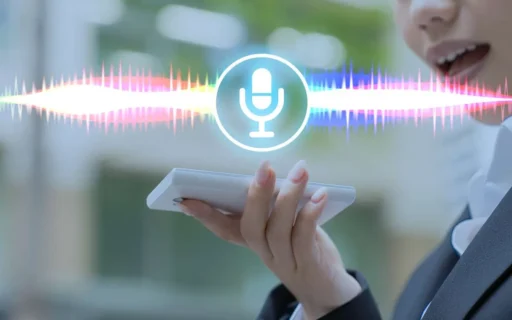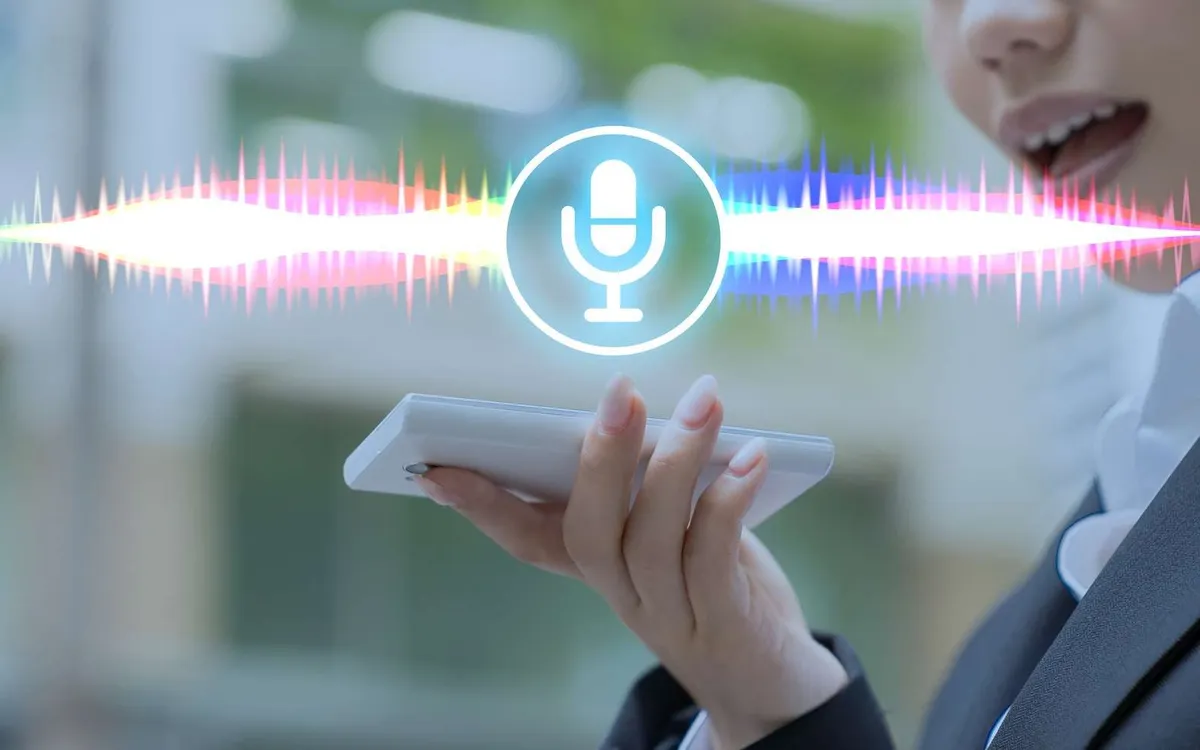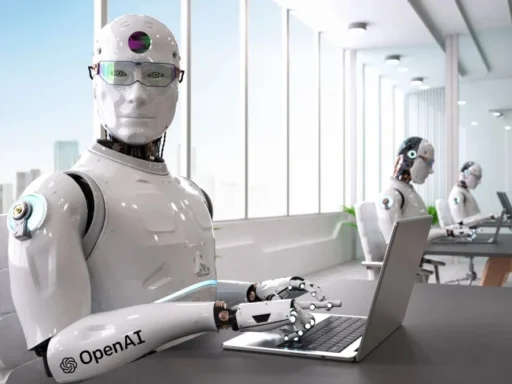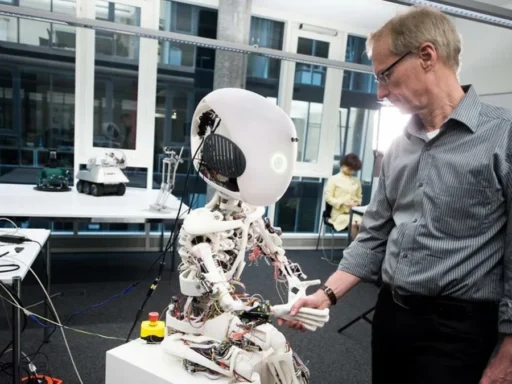What does it mean when a voice isn’t real—but sounds exactly like someone you know? That’s not tomorrow’s problem. It’s now.
If you’ve been online lately, chances are you’ve heard a voice that made you pause. Not because it’s robotic—but because it sounds just like a Twitch streamer or YouTuber you follow. That’s where Jschlatt AI Voice comes in.
We’re in the middle of an audio revolution. AI voice synthesis is no longer just a lab experiment—it’s built into music tracks, stream overlays, even prank calls. For devs, creators, and startups—it opens serious creative and commercial doors. If you can code it, you can give it a voice.
And in this whole wave, voices like Jschlatt’s are right at the center of the hype cycle. Why? Because combining personality-driven voices with AI makes the experience feel way more human—and way more viral.
This article isn’t fluff. We’re getting into the guts of AI voice tools, how platforms like Arting AI and Vocalize are cloning voices, what it means for dev workflows, and why ethics can’t be an afterthought.
The Era Of AI Voice Synthesis
AI voice isn’t just about sounding cool. It’s changing the way software works from the ground up. We’re not talking about simple Siri-style assistants anymore. It’s reaching into real content development.
Audio experiences can now be customized at scale. Need a branded podcast intro? Auto-generate it. Localize instructions into ten accents? Done in minutes.
For developers, it flips the script on UI. Want to add conversation-based control? That’s doable now—with emotion, inflection, and timing baked in.
Enter Jschlatt AI Voice. Not just a novelty, but a cultural landmark in voice cloning. Jschlatt—known for that sarcastic, gravelly tone—became unintentionally iconic online. And so naturally, his voice became a go-to model for AI cloning.
Suddenly you had tools that let anyone turn their text into something that sounded like him. Platforms like Arting AI deliver a free version. Others like TopMediai and Vocalize added advanced song and speech cover capabilities.
So why does this matter?
The ability to replicate a well-known personality’s voice—and make it available to the average user—signals a leap in tech + culture fusion. It’s like deepfake video technology, but for ears. We’re no longer just seeing synthetic content. We’re hearing it—often before we know it’s fake.
That’s where this article is headed. We’re peeling back the layers of AI voice synthesis. Digging into the programming stack, market shifts, and ethical storm clouds. What’s enabling Jschlatt’s AI counterpart, and what does it mean for the next wave of content tools?
Let’s find out.
Jschlatt AI Voice: A Catalyst For Innovation
First off, what even is Jschlatt AI Voice?
It’s a set of AI-powered tools that replicate the voice and style of internet personality Jschlatt. Using machine learning, developers trained voice models based on his speech patterns, tone, pacing, and emotional cues.
Now it’s available in multiple formats:
- Arting AI: Lightweight and browser-based. Great for quick text-to-speech content. No sign-up required.
- TopMediai: Offers a song cover feature, voice changer, and editing tools for creators experimenting with music styles.
- Vocalize: Built for pros. You get more nuanced tuning, export options, and better emotional range.
Let’s break it down with a quick comparison.
| Platform | Key Feature | Use Case |
|---|---|---|
| Arting AI | Free, no signup | Easily generate meme content or short clips |
| TopMediai | Music covers + voice changer | Experiment with Jschlatt-style vocals in tracks |
| Vocalize | Customizable TTS with pro controls | Use in scripted podcasts, narrative content |
This isn’t just fun and games. Personality-driven AI voice tools like these are fueling more audience engagement. Fans feel connected. Creators move faster. And startups are stretching limited budgets by replacing voice actors with synthetic replicas that feel personal.
But let’s not sugarcoat it.
There’s a real debate here. Using someone’s voice without explicit consent—like what happened when Jschlatt’s voice covered Frank Sinatra’s “My Way” without rights—can cause legal battles. That AI-generated cover? Pulled by Universal Music Group in a heartbeat.
This isn’t hypothetical. It’s already pushing boundaries of copyright, likeness rights, and cultural norms.
Some say this is just like Photoshop for audio. Others argue voices aren’t playthings—they’re identity. Both might be right. Depends on how it’s used.
As this tech gets better, faster, and cheaper, the ethical lines get blurrier. We’re going to explore that deeper in Part 3—but it starts with understanding the tech.
And yes, the tech is wild.
Breakthroughs In AI Voice Synthesis Research
Let’s talk science here. The old days of robotic text-to-speech are gone. Today’s voice cloning systems have cracked the code on human nuance.
By training models with just a few minutes of voice data, developers can mimic voice tone, pitch, pauses, even subtle stutters. It’s surgical.
Here’s what’s powering the shift:
- Neural networks tailored for timbre replication and emotion detection
- Transformer-based models that fine-tune output for contextual speech flow
- Massive audio datasets feeding deep learning architectures
And this isn’t staying in the entertainment lane.
Customer service bots? Now they sound like human agents.
Online learning? Picture a professor’s voice giving you personalized audio feedback.
Accessibility tech? AI voices are filling the gap where human voices can’t scale.
It’s also hitting gaming hard. Imagine NPCs with subtle emotional range, not just canned responses. Voice synthesis becomes the secret sauce for immersion.
We’re not just building assistants. We’re building characters, experiences, and whole identities through sound. And with platforms like Jschlatt AI Voice leading the charge, the bar for authenticity keeps rising.
This is the new baseline.
And if you’re not paying attention to how these tools are reshaping the content stack—you’re already trailing.
Programming Tools & Platforms for AI Voice Synthesis
Wondering how platforms like the Jschlatt AI voice are even possible? Behind those eerily accurate voice clones is a stack of programming tools built to sculpt, refine, and launch synthetic voices in real time. If you’re aiming to customize an AI-generated voice to sound just like your favorite Twitch personality or your company’s next virtual ambassador, it starts with the codebase.
Essential programming languages and frameworks driving AI voice synthesizers
Voice synthesis at its core isn’t magic—it’s math, code, and a lot of training data. Developers working on projects like Jschlatt AI voice typically start with Python, the undisputed king language for machine learning, because of its deep ecosystem and simplified syntax.
From there, two major frameworks dominate the AI voice creation space:
- PyTorch: Loved for its dynamic computation and debugging ease, this open-source machine learning library is popular for developing custom voice synthesis architectures.
- TensorFlow: Google’s heavyweight deep learning toolkit—more verbose than PyTorch but powerful and scalable. Many pre-trained models are available with it.
Other players that frequently show up in voice generation pipelines include Librosa (for audio analysis), FFmpeg (for handling media), and NVIDIA’s NeMo toolkit, which provides pre-built models for speech-related pipelines.
Integrated AI voice platforms: Empowering developers
Not everyone can (or should) start from scratch. Enter plug-and-play solutions like Google Cloud Text-to-Speech, Amazon Polly, and Microsoft Azure Voice Services. These platforms make it easy to throw in a text string and get a polished voice clip out—without wrangling GPU memory errors.
Each offers APIs that professionals and hobbyists alike lean on when launching products fast:
Amazon Polly supports neural text-to-speech (NTTS) voices, empowering creators to build dynamic user experiences. Meanwhile, Google offers over 220 voices in over 40 languages—ideal for localization on the go. Open-source tools like Mozilla TTS and Coqui provide an alternative path for privacy-focused developers who want full control.
Customization in AI voice synthesis: Tailoring voices for unique outputs
It’s not just about speaking; it’s about how something is said. Synthetic voice tools now let users bend pitch, tweak inflection, and instill personality. You’re no longer just cloning Jschlatt’s voice—you’re directing it like Spielberg.
Creators build custom voice personas for everything from in-game characters to brand mascots. Think car assistants whispering in soothing tones or horror narrators with bone-rattling bass. Jschlatt AI voice generators, for example, are regularly used to overlay his sarcastic voice onto meme compilations and AI-generated song covers.
Workflow insights: Programming tools designed for seamless voice synthesis project management
When voice cloning moves from side-project to product pipeline, good workflow management becomes critical. Tools like Docker ensure consistent environments across teams. GitHub Actions and Jenkins automate testing and model deployment. Notion or Trello boards keep timelines tight.
Developers often combine voice model training with text preprocessing tasks, batch rendering, human-in-the-loop voice tuning, and speaker embedding updates. Many lean on integrated pipelines using Hugging Face for model management, or Weights & Biases for tracking experimental results.
How Jschlatt AI aligns with programming workflows to enable fast voice generation
Jschlatt AI voice models—like those from Arting AI, Vocalize, or TopMediai—offer prebuilt platforms where users can skip the hard stuff and create instantly. These platforms blend API-accessible voice generators with intuitive UIs, making them a dream for rapid prototyping and meme-worthy content.
For developers, most of these tools come with scalable REST APIs and allow fine-tuning—so you can plug your own training data or control pacing and intonation directly from a script. It’s like getting a voice actor who never misses a recording session. Collaboration gets smoother when teams can export, remix, and re-use Jschlatt’s signature tonal quirks for everything from video editing to game dev.
Whether it’s launching a TikTok clone with AI influencers or creating accessibility features for the hearing-impaired, Jschlatt’s voice shows just how quick idea-to-execution can be when toolkits are built for agile pipelines.
AI Startups Revolutionizing Voice Synthesis
AI voice synthesis isn’t just a Big Tech playground anymore. Startups are reshaping the space daily, offering powerful yet accessible tools—no PhD required. These innovators are giving small creators the same power giant studios once had, from building Jschlatt’s unmistakable drawl into content, to launching totally synthetic podcast hosts.
Key emerging players in AI voice startups
Names like Arting AI, Vocalize, and TopMediai have pioneered the Jschlatt AI voice tools almost overnight. They cater to the creator economy—YouTubers, VTubers, streamers—by focusing on ease, flexibility, and zero setup time.
Beyond them, AI startups like Respeecher and Lovo have taken aim at Hollywood. Respeecher’s tools were famously used to recreate young Luke Skywalker’s voice in “The Mandalorian,” while Lovo lets marketing teams generate voiceovers at scale in dozens of languages. These aren’t just voice changers—they’re voice creators.
Market growth: Analysis of current trends and projections for AI voice synthesis
According to recent projections, the AI voice generator market is on track to hit $6.4 billion by 2033. That’s not hype—it’s backed by a 15.6% CAGR, driven by demand in entertainment, accessibility tech, and customer experience automation.
Biggest slice of that pie? Software-based voice tools that require no local hardware and run entirely in the cloud. In 2023 alone, software platforms accounted for more than two thirds of market revenue.
North America still leads the charge, but Asia-Pacific is catching up fast thanks to localized voice tech for ecommerce, gaming, and virtual education.
Contribution of startups to democratizing access to voice synthesis tools
Once, voice cloning tech was locked behind academic doors and six-figure R&D budgets. Not anymore. Startups like MyVocal, Kits.ai, and Play.ht are removing those barriers. They let users create, remix, and share AI voices with no code and minimal cost. Some even offer free tiers, perfect for students and solo creators.
The rise of the Jschlatt AI voice tools is proof: when the tools get simpler, creativity explodes. People are scripting game mods, launching parody channels, and narrating fanfiction—with Jschlatt’s voice leading the charge.
Of course, this new access comes with ethical minefields. But in pure technical terms? Startups have succeeded where legacy audio firms failed: making synthetic voice a standard creative tool, not a fringe experiment.
Trends Shaping the Future of AI Voice Synthesis
Most people don’t wake up wondering how AI voices are built. But they do care when someone clones their favorite creator’s voice on a TikTok meme and it sounds dead-on. That’s the future creeping in—quietly, then suddenly. Let’s break down where this is headed, and why the world of Jschlatt AI voice tools is just the beginning.
Shifts in artificial intelligence voice tools: From text-to-speech to conversational companions
Old-school text-to-speech was robotic. Stiff. Think GPS voice from 2008. Now we’ve got AI voices with swag. Tools like those replicating Jschlatt’s voice aren’t just mimicking speech—they’re capturing tone, timing, even personality quirks. That’s not text-to-speech anymore. It’s scripted dialogue with an attitude.
We’re looking at a world where these cloned personalities might coach you through workouts, read bedtime stories to your kids, or negotiate with customer service bots on your behalf. Adaptability is the new frontier. These voices are learning what you like, how you talk, and flipping the script in real-time.
It’s less about parroting words and more about building rapport. Think digital companions, not just tools.
Multi-language capabilities: Localization as a transformative trend
AI isn’t bound by borders or tongues anymore. What used to take entire dubbing teams can now be handled by multilingual voice models in minutes. Jschlatt’s AI voice in Spanish? French? Japanese? It’s not hypothetical—it’s pipeline tech.
Making content globally approachable means indie creators can go global on day one. Voice tools are now rolling out multi-language options that keep original speaker cadence while shifting dialects. The AI sounds like Jschlatt—but now in Mandarin.
That’s a power multiplier for creators, marketers, and educators. No middlemen, no re-recording. Just pure scalability.
AI voice content creation for metaverse and digital avatars
A static avatar is boring. A mute one? Useless. As more platforms push into immersive experiences—think VR conferences, interactive games, digital concerts—AI-powered voice is turning avatars into full-blown personalities.
Many metaverse creators already rely on AI voices to bring characters to life without needing to hire full voice teams. Tools like Arting AI and Vocalize make it stupid easy to build custom dialogue for virtual characters—complete with emotion sliders and pitch controls.
Imagine walking into a virtual bar and actually having a drink convo with a character voiced by AI Jschlatt—complete with sarcasm, punchy comebacks, and reactive speech.
This isn’t far-off sci-fi. It’s here. And if you’re not paying attention, you’re already behind.
Challenges & Opportunities in AI Voice Synthesis
Ethical conundrums for researchers, startups, and investors
Of course, wherever there’s speed, there’s danger. Voice cloning opens a legal hornet’s nest: consent, copyrights, impersonation. Jschlatt himself dropped a Frank Sinatra cover using AI—only to see it pulled for copyright violations by Universal Music Group.
That’s the irony. Creators getting penalized while deepfakes using their voices stay floating online. There’s little oversight, and it’s creating a game of digital whack-a-mole with creators stuck in the middle.
Opportunities for growth with responsible innovation
But it’s not all doom-scroll. There’s upside too—massive upside. AI voice synthesis is supercharging accessibility. Think voiceovers for visually impaired users. Multilingual support for global classrooms. Easy content creation for anyone with a mic and keyboard.
What’s missing is clear policy—guidelines that allow innovation without turning creators into collateral damage.
Call for regulatory frameworks ensuring fair development and deployment
This tech’s moving fast. Regulation? Not so much. Right now, companies are making up their own rules about voice ownership. That won’t cut it.
We need tightly defined standards: who owns the output, what’s protected, and how to flag misuse. Governments can’t sit this one out, or the internet’s going to turn into a Salvador Dalí painting narrated by AI Elon Musk.
Smart governance doesn’t kill innovation—it saves it from imploding.
Conclusion: Bridging Innovation with Responsibility
The rise of Jschlatt AI voice tools is more than a fun internet moment. It’s the test case—proof of how fast, powerful, and complicated this space is becoming.
We’re heading toward a world where AI personalities aren’t just tools, they’re co-creators. They spark creativity, reduce barriers, and let people build experiences that used to take teams of editors and producers. But none of that matters if creators lose control of their own voice.
Here’s the punchline: you can love this tech and still demand guardrails.
- Create with transparency—tell people when AI’s involved.
- Prioritize consent—especially with real human voices.
- Push your platforms to define and defend ethical standards.
We’re standing right at the starting line of the AI voice revolution. It’s tempting to sprint toward growth and ignore the guardrails. But long-term value comes from building something you won’t regret explaining later.
Let’s not wait until voices lose all meaning or trust. Use the tools. Respect the artists. And demand better systems while we’re still early enough to shape how this unfolds.







